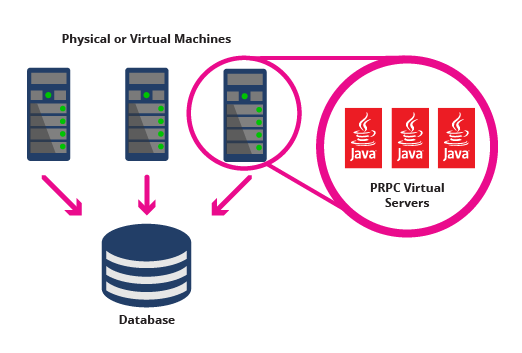Cluster management
A typical Pega Platform cluster consists of several physical or virtual machine instances sharing a single database. Machine instances may have multiple web application server instances or Pega Platform servers.

Based on organizational needs, it is important to consider which of the following tools to use for performing system maintenance on Pega Platform servers:
-
Incorporate Autonomic Event Services (AES) to integrate this function into network operation centers.
Tip: It is recommended to deploy AES to manage production systems with multiple clusters. - Access the System Management Administrator (SMA), which can be used from every Pega Platform server in the system.
-
Use high availability MBeans, which can be directly integrated into a custom Pega Platform management console to notify that an upgrade is in process.
Note: If this process is used, rules that are created at runtime on the old rule schema must be manually moved to the new schema.
If an organization is not managing multiple clusters, you can use high availability landing pages. Because the Pega Platform cluster management pages use the system pulse to communicate, data is accurate after two pulse cycles, and the latency that is introduced when updating the Pega Platform server run state might not be optimal for large organizations.